Jan 22, 2018
Cultural Experience – a temple/shrine visit
If you are coming to Japan for the first time, you will be surprised about the large amount of shrines and temples everywhere. Especially for western people, shrines and temples are something very new and unique, that's why it's kind of difficult to understand all the rules and traditions around a shrine/temple visit.
Even if you don´t believe in Shintoism or Buddhism, a shrine/temple visit in Japan can be a great experience, if you know about the backgrounds.
Shinto and Buddhism, the two most important religions in Japan, are not always easy to distinguish because of their long common history. Shinto mostly exists only in Japan and is a polytheistic, animist or theophobic religion. The buildings or places of worship of Shinto are called Shinto shrines.
Buddhism is a teaching tradition and religion that originated in India. The buildings, or places of worship, of Buddhism are temples and are often very colorful.
In the following I will describe the experience of visiting a Shinto shrine. There are few differences to visiting a Buddhist temple in Japan, so this description can also be used for visiting the latter as well.
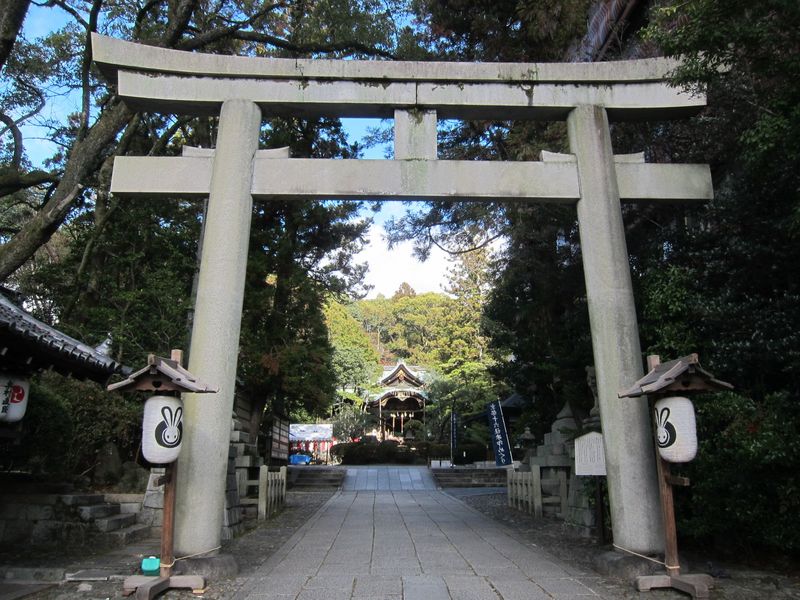
First of all, you will probably stand in front of a big gate before going to the Main building. At larger gates you can often find guards, who are supposed to ward off evil spirits. You should bow at the entrance to ask the god of the deity to let you in. Right after the gate you will usually find a small place for cleaning. Before praying, you should symbolically clean yourself. There are some rules to follow:
First off, wash your left hand, then your right hand. Fill you left hand with water and clean your mouth. After that you should wash again your left hand and in the end the trowel / scoop used to collect the water. During the cleaning process, you should not touch the trowel with your lips.
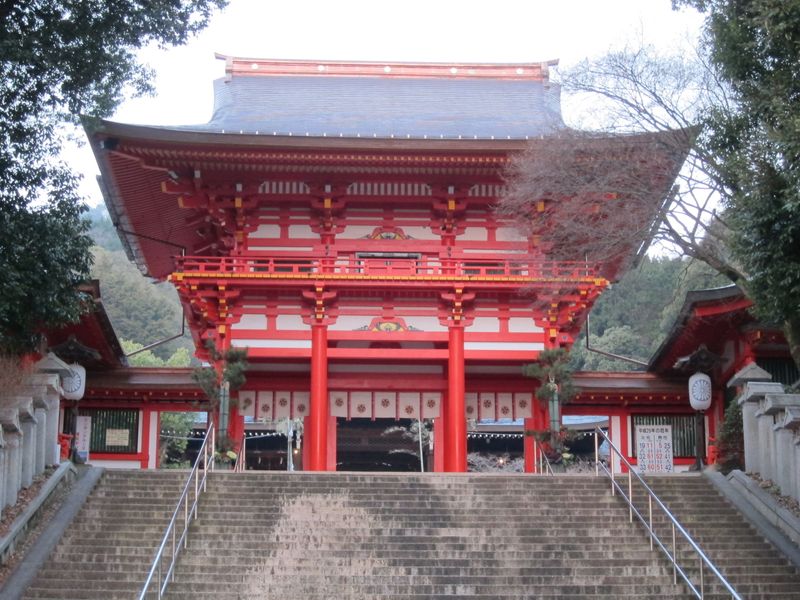
The next step will be the main shrine building where you can pray for health, a good exam or whatever you wish for. Praying also follows a certain ritual, so please follow this procedure.
Throw a five yen coin in the box of the main altar and bow one time. Most of the shrines have a bell (sometime a huge one), which you should ring at least one time. After that it's time for praying. Let the god of the shrine know what you would like to have (in silence). In the end, bow again and offer your thanks to the god. Unlike the praying at a shrine, you don't have to clap your hands at a temple.
Small wooden plaque (ema)
Alternatively you can buy at the temples or shrines of Japan, a small wooden plaque (ema) usually with the logo of the temple/shrine or the current zodiac sign. On the plaque you have to write your wish and hand it to the shrine wall with the others. You can also just bring it back home as a souvenir. After the wall is full, the wooden plaque will be burned so that the desires can soar into the sky. 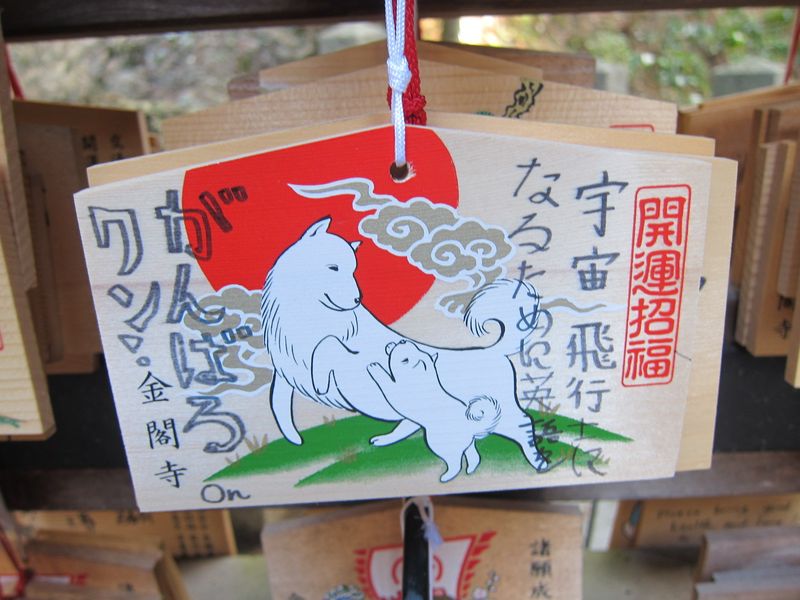
Talismans (Omamori)
Often you can find small little bags at the shrine shop. These are little talismans and should protect the wearer from all bad evils. There are talismans for every situation. For health, happiness, for getting a baby or for a good result in an exam. It is a secret what is hidden inside the bag. You should not open the bag, otherwise the effect will be gone.
The Guardian (Ofuda)
For whole companies/businesses or households you can also buy a guardian called Ofuda. The guard is marked with the logo of the shrine / temple and its gods. They are often made of wood or paper. Usually you will get those after paying a special amount of money (starting from 5,000 yen) and joining a little ceremony. 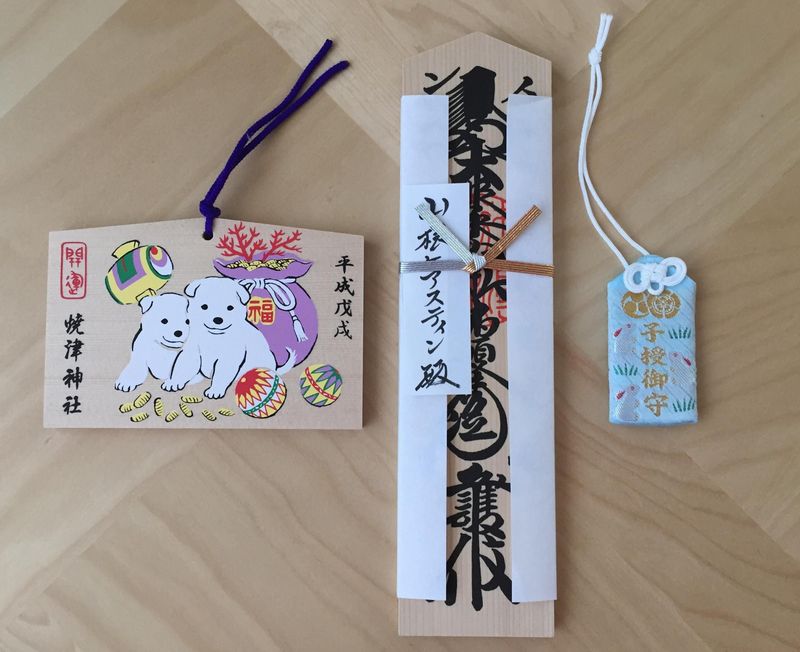
Fortune telling (Omikuji)
If you see a cabinet with many compartments or a small box with little papers inside, you have found the omikuji (common to both shrines and temples in Japan). If it is just a box, you can throw in the money which is written on the box (usually 100 or 200 yen) and take a fortune telling paper and read it. Some places has an english version which is very foreigner friendly.
In case there is a cupboard you have to do the following steps:
1. Throw 100 yen into the designated slot next to the cabinet.
2. Shake the box and take out a small stick from the box and check the number written on it (usually in Japanse).
3. Locate the number on the drawer and take out a piece of paper from there.
4. Now you can read your prediction.
In case the prediction is not that positive you can fold the paper and hang it on a wall or tree together with the other unlucky predictions.
Often you can find many statues and symbols around the shrine. All of them has their own meanings. Most of them you can only find at bigger temples.
Three Jizo
Stroke the jizo statue (typically associated with a Buddhist temple) using your right hand, or both should you want to become a more positive person.
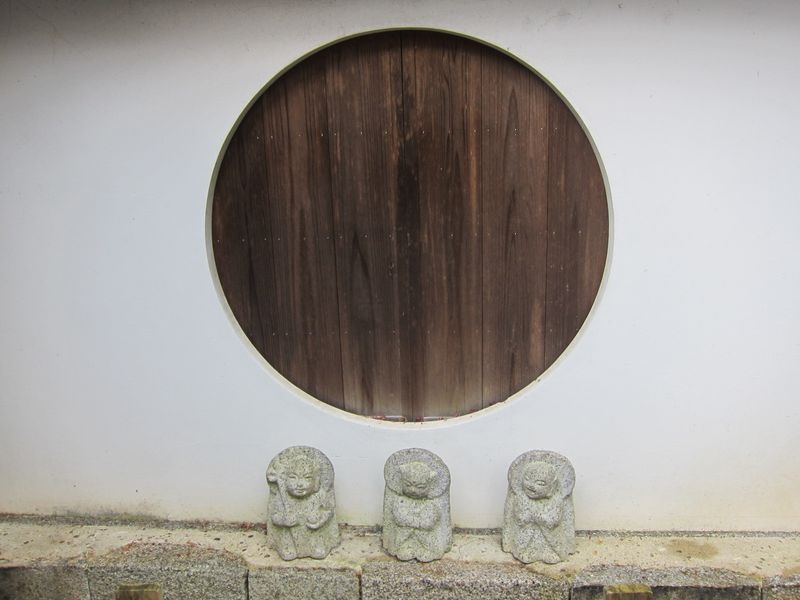
Hotei – the deity of good fortune
Hotei is a Chinese Zen Buddhist monk, who is an incarnation of Mirokubosatsu (god of love and kindness), and is thought to bring prosperity.
Mani Wheels
A Mani wheel is a Buddhist object in common use by Buddhists known throughout the world. Mani wheels contain the Heart of Sutra. Earn merit by turning it once. If you have wishes regarding the health, longevity, etc. walk around the hall clockwise and keep touching and turning the wheels with your right hand.

Temmangu Ox
Oxen are regarded in Japan as messengers of Tenjin-sama, a Shinto deity. The ox is said to bear suffing on your behalf. Touch the part of the ox that matches a part of your own body should it be undergoing some degree of suffering.
I´m a german girl living in the center of Tokyo, but my true love belongs to the countryside of Japan (especially Chiba and Hokkaido). I love traveling in Japan and explore hidden areas.
I want to help people with my articles to get in touch with the Japanese culture and all the beautiful places you can explore.
Follow me on IG https://www.instagram.com/nihonbluebutterfly/?hl=de
Besides traveling around, I love trains, handcraft and my little rabbits.



0 Comments